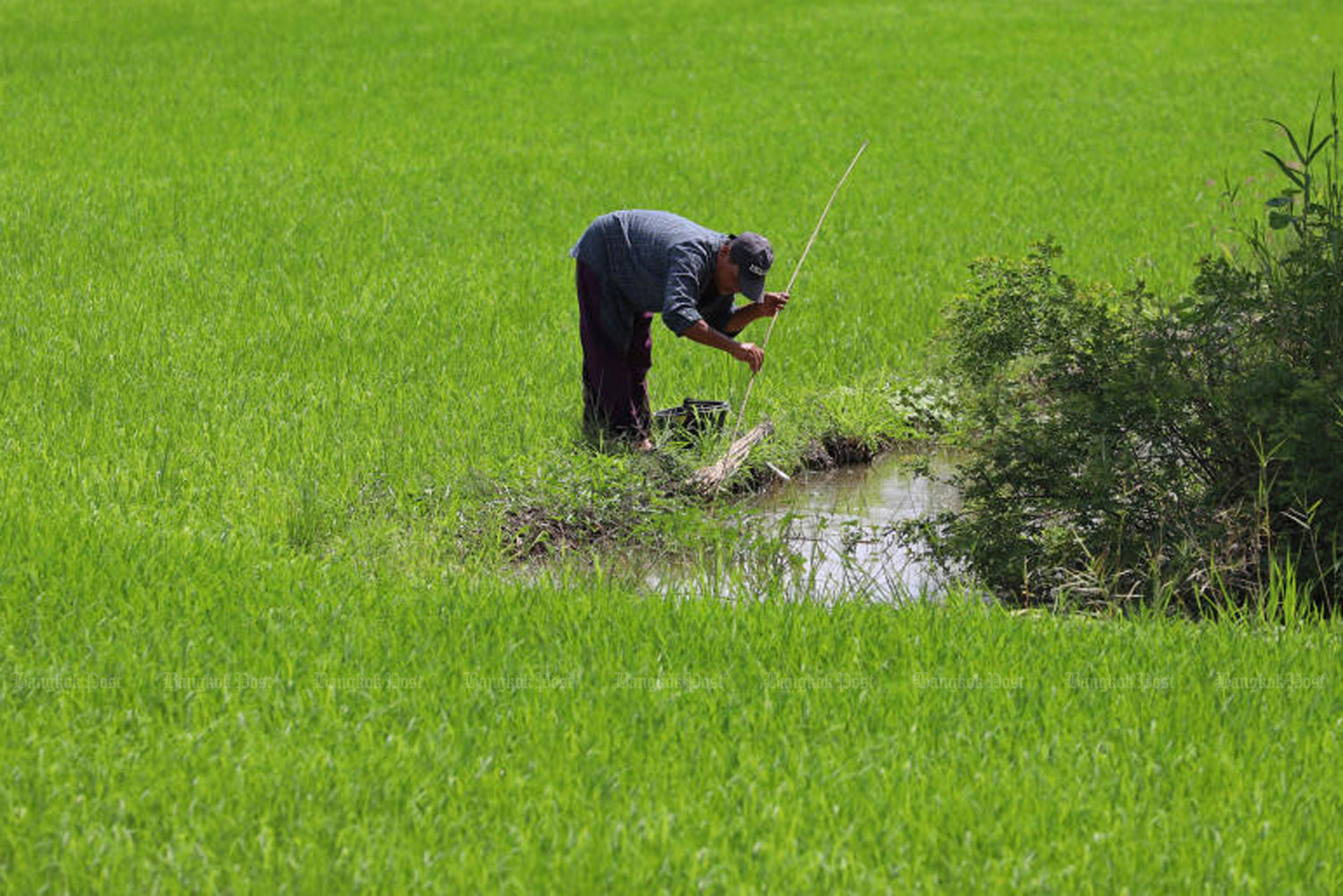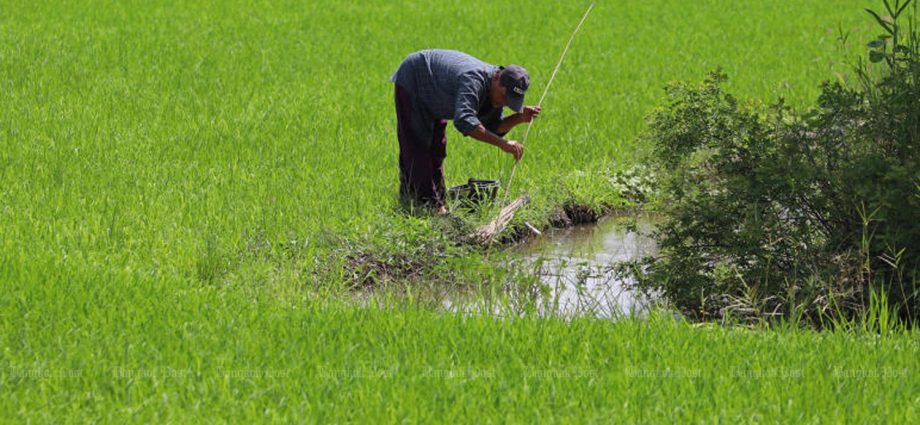Authorities advise against second crop as El Nino will reduce rainfall this year

Farmers are being asked to grow only one rice crop this coming season as rainfall will be below average because of the El Nino weather pattern, says the Office of the National Water Resources (ONWR).
The rainy season, which normally begins in the third week of May, will start a bit later this year with a period of intermittent rain in June, said Surasee Kittimonthon, the ONWR secretary-general.
The agency has devised a water management plan for the country’s dams to help preserve water. Its success, he said, would depend on close cooperation from all stakeholders, especially farmers, to save water.
“We can provide water to farmers for the first rice crop, starting in the rainy season,” he said. “But for the second or third crops, we would like farmers’ cooperation to grow other plants that need less water to help limit the water shortage.”
The ONWR on Thursday discussed water management for the rainy season with the Royal Irrigation Department, the Meteorological Department, the Department of Water Resources, the Electricity Generating Authority of Thailand (Egat), the Bangkok Metropolitan Administration (BMA) and other agencies.
As a result of El Nino, Mr Surasee said rainfall would be 5% less than average. Heavy rainfall will be seen from August to September, covering 60-80% of the country.
He said that at least two tropical storms would hit the country in August and September, which could top up water in some dams. He also warned of heavy rain in the North, the Northeast and the East this weekend as Cyclone Mocha would reach Myanmar on Saturday.
Meanwhile, the Royal Irrigation Department said that water in the reservoir of the Bhumibol Dam in Tak province was currently at 43% of capacity, while the figure for the Sirikit Dam in Uttaradit was 22%.

